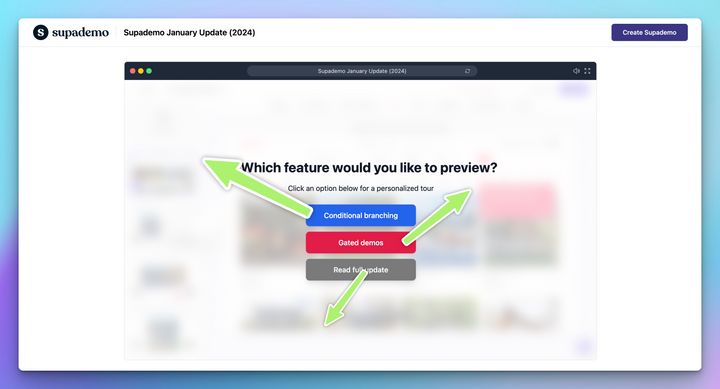Introduction
Are you tired of wasting time and resources on unqualified leads that aren't the right fit for your business? Do you want to maximize your marketing and sales efforts by focusing on high-value accounts? If so, account-based marketing (ABM) might be the strategy you've been looking for. In this comprehensive guide, we'll explore the benefits of ABM, how it complements inbound marketing, and provide you with a step-by-step framework for implementing a successful ABM strategy. Whether you're new to ABM or looking to enhance your existing efforts, this guide has you covered.
What is Account-Based Marketing?
Account-based marketing (ABM) is a strategic approach focusing on high-value market or business accounts. ABM aims to create personalized buying experiences to acquire customers, build relationships, and drive business growth. By treating each account as an individual market, ABM allows you to tailor your communications, content, and campaigns to specific accounts, resulting in greater return on investment (ROI) and customer loyalty.
The Relationship Between Account-Based Marketing and Inbound Marketing
Batman and Robin. LeBron and D-Wade. Peanut butter and jelly. Some partnerships are just meant to be. The same goes for account-based marketing and inbound marketing. While inbound marketing focuses on attracting customers through valuable content and a delightful customer experience, ABM takes a more targeted approach by personalizing the buyer's journey for high-value accounts. By combining the two strategies, you can attract a broader group of prospects, create content that serves both ABM and inbound marketing, and leverage software tools to implement your strategy seamlessly.
Benefits of Account-Based Marketing
Account-based marketing offers numerous benefits for businesses of all types. Let's explore some of the key advantages:
1. Keeps Marketing and Sales Aligned
One of the primary benefits of ABM is that it promotes alignment between marketing and sales teams. By working together towards the same goals and understanding each other's roles, both teams can ensure consistent communications and a seamless customer experience. This alignment also allows for easy handoffs between marketing and sales, ensuring that no matter where an account is in the buyer's journey, they receive personalized attention and support.
2. Maximizes Relevance Among High-Value Accounts
ABM requires you to personalize everything for each account, from content to product information to communications and campaigns. This level of customization maximizes your business's relevance among high-value accounts. By demonstrating how your products or services address their specific challenges, you position your business as the ideal choice for their needs.
3. Delivers Consistent Customer Experiences
To create a remarkable ABM strategy, you must deliver consistent customer experiences. This requires alignment between sales and marketing, ensuring that all team members are aware of an account's position in the buyer's journey. By providing personalized and prompt communication, campaigns, and pricing details, you can create a long-term sense of delight among your accounts.
4. Measures Return on Investment
With ABM, measuring return on investment (ROI) becomes easier. By tracking the resources and time invested in each account, you can determine the effectiveness of your ABM tactics. This data allows you to nurture and delight high-value accounts, recognize similar accounts in the future, and continuously improve your strategy based on the results.
5. Streamlines the Sales Cycle
ABM streamlines the sales cycle by focusing your efforts on specific high-value target accounts. By eliminating the need to experiment with different tactics to prospect and qualify a large pool of leads, ABM confirms that the accounts you target are the right fit for your business. This streamlining saves time and resources, allowing you to focus on the stages of the cycle that have a positive impact on your bottom line.
6. Expands Business Through Account Relationships
By investing time and resources in engaging and delighting a group of carefully chosen high-value accounts, ABM allows you to build strong relationships. These relationships can lead to long-term business expansion as loyal customers become your best marketers and brand advocates. By providing personalized and consistent customer experiences, you encourage referrals, word-of-mouth marketing, and testimonials, which help you expand your business among their networks.
Account-Based Marketing Framework
Implementing a successful ABM strategy requires a framework that guides your efforts. Let's explore the key components of an ABM framework:
1. Marketing-Sales Alignment
To ensure the success of your ABM strategy, marketing and sales teams must be aligned. This alignment involves agreeing on resource allocation for each target account, defining roles and responsibilities, and establishing clear communication channels. By working together, marketing and sales can create consistent experiences for accounts and seamlessly transition leads through the buyer's journey.
2. Account Qualification
Defining what constitutes a high-value account is crucial for ABM success. Create an ideal customer profile that outlines the characteristics of the accounts you want to target. Consider factors such as financials, scalability, and the competitive landscape when qualifying potential accounts. Marketing and sales should collaborate in this process to ensure alignment.
3. Go-to-Market Approach
Once marketing and sales are aligned and target accounts are qualified, it's time to map out a go-to-market plan. Understand how a new customer would move through the sales process using an ABM approach. Identify any areas of friction or poor communication that need to be addressed. Personalize the experience by adding value and delivering a premium experience to target accounts.
4. Account-Based Marketing Strategy
A sound ABM strategy is essential for success. Follow these steps to create an effective strategy:
- Use a strategic account planning template to outline initiatives for each unique account.
- Secure organizational ABM alignment by getting all internal stakeholders on board with your strategy.
- Build your ABM team, starting with a small task force and expanding as needed.
- Research and pick your ideal set of target accounts based on criteria such as industry, company size, and engagement with your inbound content.
- Finalize account plans that outline potential leads, required content, and channels for each account.
5. Attract Contacts Associated with High-Quality Target Accounts
Attracting contacts associated with your target accounts is crucial for ABM success. Leverage inbound marketing strategies to attract these contacts, and consider techniques such as referrals, social media engagement, personalized outreach, and targeted advertising. Create a personalized website experience through customized landing pages tailored to the needs of each account.
6. Forge Strong Relationships with the Account's Buying Committee
Building strong relationships with the buying committee of each target account is essential for ABM success. Offer education, personalized content, and one-on-one communication to make buying committee members feel valued and prioritized. Host events and experiences to connect with account members on a personal level. Ensure consistent and well-timed meetings and use email sequencing to enhance communication.
7. Measure and Analyze ABM Results
To continuously improve your ABM strategy, measure and analyze your results. Track interactions with target accounts, monitor deal health and revenue, and assess account engagement. Use analytics tools and reporting dashboards to gain valuable insights and make data-driven decisions. Refine your strategy based on the results and iterate as needed.
Account-Based Marketing Tactics
To effectively implement your ABM strategy, you'll need to employ various tactics. Let's explore some key tactics that can enhance your ABM efforts:
1. Tailored Value Proposition
Craft a compelling value proposition that addresses the unique challenges and goals of each target account. Customize your messaging to showcase how your products or services can solve their specific pain points. By demonstrating the value your business brings to the organization, you position yourself as the ideal choice for their needs.
2. Stakeholder Mapping and Engagement
Map out the roles, responsibilities, and influence of key stakeholders within each target account. Develop relevant communication strategies to engage and build relationships with these decision-makers. By understanding the dynamics of the buying committee, you can tailor your approach to resonate with each stakeholder.
3. Web Personalization
Create customized website experiences for each target account. Use landing page builders to tailor landing pages with relevant content, case studies, and calls-to-action that engage decision-makers. By personalizing the website experience, you elevate brand awareness and maximize relevance among your target audience.
4. Account-Based Social Selling
Encourage your sales team to use social media platforms, such as LinkedIn, to engage and build relationships with target accounts. Share personalized content, contribute to relevant discussions, and network with key stakeholders. Authentic outreach on social media can help you connect with decision-makers and establish meaningful connections.
5. Paid Advertising
Leverage advertising platforms to deliver personalized ads to individuals at target accounts. Customize your ad messaging to address specific pain points and goals. By targeting decision-makers with relevant content, you increase brand awareness and engagement while staying top-of-mind.
6. Retargeting
Retargeting is effective for converting stakeholders who have shown interest in your offer. Use retargeting techniques to optimize ads with relevant content across channels. This reinforces your value proposition and maintains brand visibility, encouraging target accounts to take desired actions.
7. Events and Experiences
Host targeted events, webinars, or roundtable discussions exclusively for your key accounts. Customize the content, agenda, and attendee list to address the specific pain points and objectives of each account. These experiences provide unique networking opportunities and valuable content that aligns with the interests and needs of your target accounts.
8. Targeted Content
Create high-quality targeted content assets, such as blog posts, industry reports, case studies, or videos, that directly address the pain points, industry trends, and desired outcomes of each account. Tailor your content to resonate with the specific needs of each account, showcasing how your business can solve their challenges.
Account-Based Marketing Tools
To streamline your ABM efforts, leverage software tools designed specifically for account-based marketing. Look for tools that offer identification features, enable collaboration between teams, and provide analytics to measure the effectiveness of your strategy. Integrations with your existing CRM and other marketing and sales applications can also enhance your ABM capabilities.
Account-Based Marketing Examples
Let's explore a few real-life examples of how companies have successfully implemented ABM strategies:
1. Restaurant Furniture Plus
Restaurant Furniture Plus, a wholesale restaurant furniture supplier, implemented an ABM strategy to target scaling chain restaurants. By personalizing their approach and focusing on accounts that were a good fit for their products, they were able to save money on paid advertising and increase their base of recurring customers.
2. HealthLink Dimensions
HealthLink Dimensions, a healthcare data company, partnered with a marketing agency to create an ABM strategy targeting health insurance providers. By leveraging personalized content and refining their approach, they experienced a significant increase in their new customer pipeline.
3. BlueYonder
BlueYonder, a supply chain management company, tested an ABM approach with a small group of accounts. By leveraging advertising and personalized content, they generated $10 million in pipeline revenue. This success prompted them to scale their ABM efforts further.
B2B Account-Based Marketing
Account-based marketing is particularly effective for B2B companies that aim to build long-term relationships with key accounts. Unlike B2C marketing, where the focus is on individual end-users, B2B marketing involves multiple stakeholders who contribute to the buying decision. ABM allows B2B companies to tailor their approach to resonate with each stakeholder and build strong relationships with key accounts.
Leveraging LinkedIn for Account-Based Marketing
LinkedIn can be a powerful platform for account-based marketing, especially for B2B companies. The platform offers features like Company Targeting, which allows you to target individuals at specific companies with customized ad campaigns. By leveraging LinkedIn's vast network and engagement opportunities, you can connect with the right decision-makers and establish meaningful relationships.
Conclusion
Account-based marketing is a powerful strategy that allows you to focus your efforts on high-value accounts, deliver personalized experiences, and drive business growth. By aligning your marketing and sales teams, qualifying target accounts, and implementing a comprehensive ABM strategy, you can attract, engage, and delight your most valuable customers. Leverage the tactics and tools we've discussed in this guide to elevate your ABM efforts and grow better with personalized, targeted marketing.
Remember, successful ABM requires ongoing measurement, analysis, and refinement. Continuously assess your results, iterate based on insights, and adapt your strategy to meet the evolving needs of your target accounts. With a strategic approach and a commitment to delivering exceptional customer experiences, you can drive long-term success with account-based marketing.




